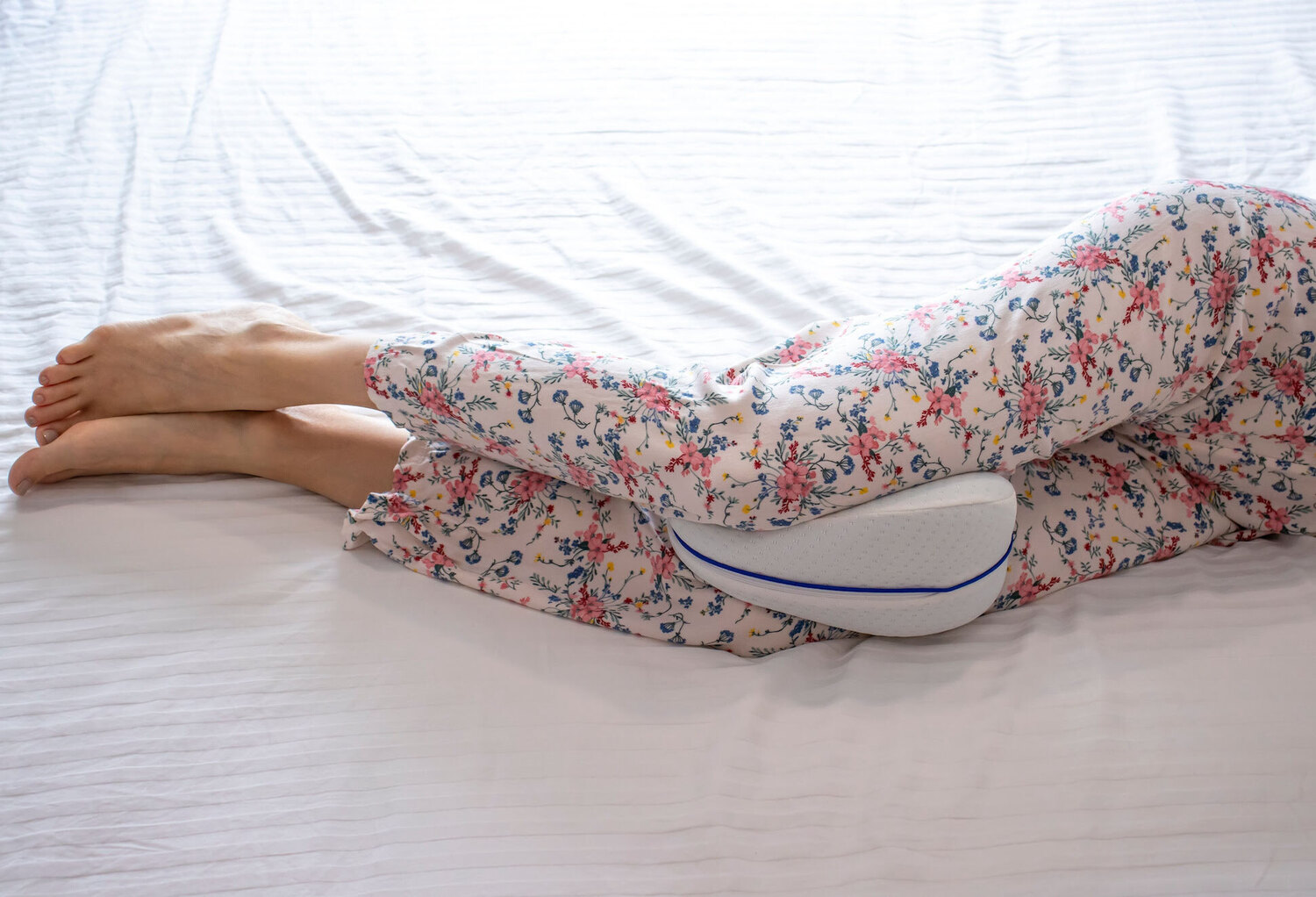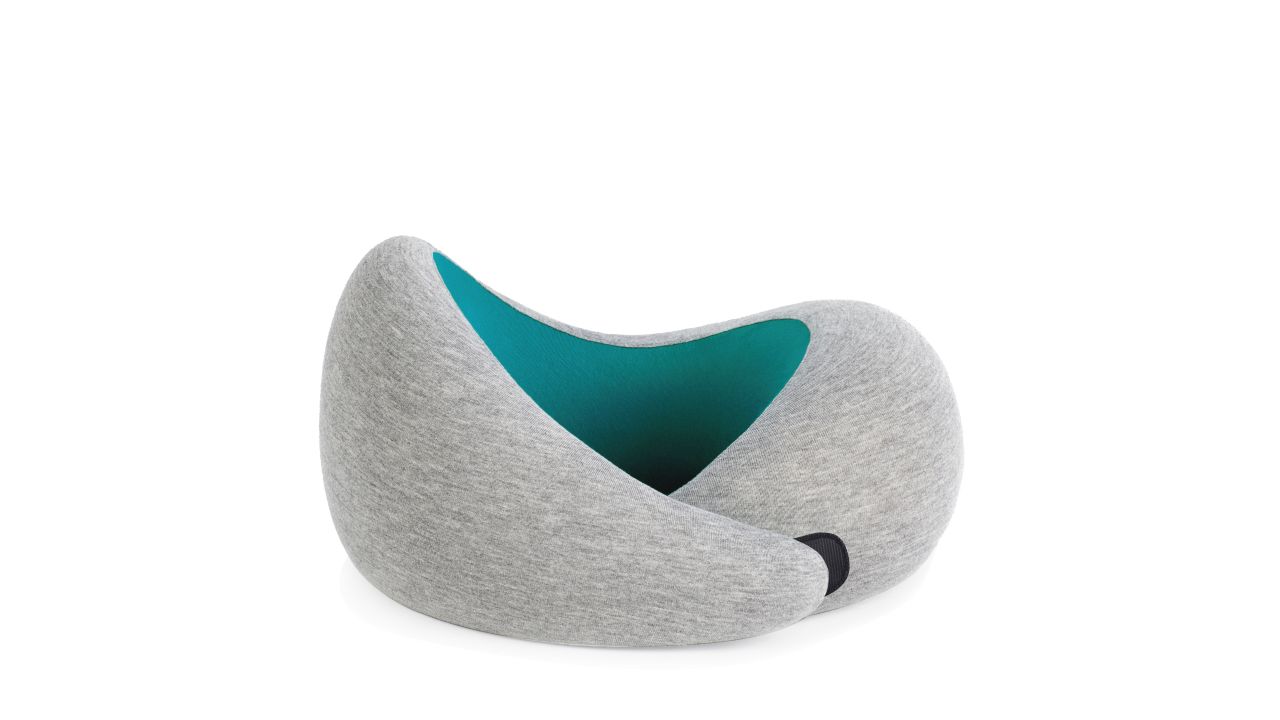Home>Articles>How Many Pillows Should You Sleep With Neck Pain


Articles
How Many Pillows Should You Sleep With Neck Pain
Modified: January 5, 2024
Discover the optimal number of pillows to sleep with when experiencing neck pain. Read our informative articles for expert advice and tips to alleviate discomfort.
(Many of the links in this article redirect to a specific reviewed product. Your purchase of these products through affiliate links helps to generate commission for Storables.com, at no extra cost. Learn more)
Introduction
Neck pain is a common complaint that affects people of all ages and can significantly impact daily life. Whether it’s stiffness, soreness, or a sharp pain, dealing with neck discomfort can make it challenging to get a good night’s sleep. One crucial factor that can contribute to neck pain is the type and number of pillows you sleep with.
In this article, we will explore the relationship between neck pain and pillows. We will discuss the importance of choosing the right pillow, as well as how many pillows you should sleep with for optimal neck support and pain relief. Additionally, we will consider various factors to help you determine the right number of pillows based on your individual needs and preferences.
Understanding the causes of neck pain and the impact pillows can have on our sleep quality is essential for finding effective solutions. By making informed choices about our sleeping environment, we can significantly reduce neck pain and promote better overall sleep health.
Key Takeaways:
- Choose the right pillow and number of pillows based on your sleeping position, neck support needs, and personal comfort to alleviate neck pain and promote restful sleep.
- Experiment with alternative methods such as exercises, posture correction, and stress management to complement pillow selection and find the best combination for effective neck pain relief.
What Causes Neck Pain?
Neck pain can be caused by various factors, including poor posture, muscle strain, injury, or underlying medical conditions. Understanding the root cause of your neck pain is crucial for finding the appropriate treatment and making necessary lifestyle changes.
One common cause of neck pain is poor posture. Spending long hours sitting at a desk with incorrect posture or constantly looking down at mobile devices can strain the muscles and ligaments in the neck, leading to discomfort. Additionally, sleeping in an awkward position or using an unsupportive pillow can also contribute to neck pain.
Other possible causes of neck pain include muscle strain or sprain due to overuse or sudden movements, such as whiplash from a car accident. Sports-related injuries, such as tackling or sudden impact, can also lead to neck pain. Medical conditions like arthritis, herniated discs, or spinal stenosis may cause chronic neck pain that requires medical intervention.
Stress and tension can also play a role in neck pain. When we are stressed, our muscles tend to tense up, including those in the neck and shoulders. This muscle tension can lead to pain and stiffness.
It’s crucial to address the underlying cause of your neck pain before attempting to alleviate it through pillow choices. Consulting with a healthcare professional or physical therapist can help you identify the specific cause of your neck pain and develop a personalized treatment plan.
The Importance of Choosing the Right Pillow
When it comes to managing neck pain, selecting the right pillow is paramount. A pillow that provides adequate support and aligns your neck and spine can help alleviate discomfort and promote better sleep quality.
One of the key factors in choosing the right pillow is maintaining the natural curvature of your neck. The ideal pillow will fill the gap between your head and shoulders, keeping your spine in proper alignment. This helps relieve strain on the neck muscles and prevents any added pressure on the joints.
A poorly chosen pillow can exacerbate neck pain or even cause new discomfort. Using a pillow that is too high or too firm can push the neck out of alignment, leading to increased strain on the muscles and vertebrae. On the other hand, a pillow that is too flat or lacks support can result in inadequate neck support and cause the neck to bend unnaturally.
Memory foam pillows are often recommended for individuals with neck pain due to their ability to contour to the shape of the head and neck. This not only provides necessary support but also helps distribute weight evenly and reduce pressure points.
Another consideration when choosing a pillow is your sleeping position. Different positions may require different levels of support. For example, back sleepers may require a flatter pillow to maintain proper alignment, while side sleepers may need a higher loft pillow to adequately fill the space between the neck and the mattress.
Lastly, it’s essential to select a pillow that is made of hypoallergenic materials and is easily washable. Keeping your pillow clean can help prevent allergens and irritants from contributing to neck pain or other respiratory issues.
By investing in a high-quality pillow that supports proper alignment and suits your sleeping style, you can significantly reduce neck pain and improve the overall quality of your sleep.
How Many Pillows Should You Sleep With for Neck Pain?
The number of pillows you should sleep with for neck pain can vary depending on individual factors, such as the severity of your pain, your preferred sleeping position, and your personal comfort. While there is no one-size-fits-all answer, here are some general guidelines to consider:
- One Pillow: In some cases, sleeping with just one pillow can provide sufficient support for your neck. Choosing a pillow that is the right height and firmness level can help maintain proper spinal alignment and alleviate discomfort. This is particularly suitable for back sleepers or those with minor neck pain.
- Two Pillows: For individuals who sleep on their side, using two pillows might be more beneficial. Placing one pillow under your head and another between your knees can help provide support, align the spine, and relieve pressure on the neck. This position can be especially helpful for those with shoulder pain as well.
- Three or More Pillows: Sleeping with three or more pillows is less common but can be useful for certain individuals. For example, if you have chronic neck pain or a specific condition that requires additional support, such as a herniated disc or spinal stenosis, using multiple pillows strategically may help relieve pressure and maintain alignment. However, it is essential to ensure that the extra pillows are arranged in a way that keeps your spine properly aligned.
Ultimately, the right number of pillows for you will depend on your individual needs and comfort. It can be helpful to experiment with different pillow arrangements and observe how your neck feels in the morning. Pay attention to any changes in pain or discomfort and adjust accordingly.
In addition to the number of pillows, it’s important to choose pillows that provide adequate support and help maintain proper alignment. Remember to consider factors like pillow height, firmness, and material when selecting the best option for your specific needs.
If you are unsure about the ideal number of pillows for your neck pain, it may be beneficial to consult with a healthcare professional or physical therapist who can offer personalized advice based on your condition and sleeping habits.
Factors to Consider for Choosing the Right Number of Pillows
When determining the right number of pillows to sleep with for neck pain, it’s important to consider several factors that can influence your comfort and support. Here are some key considerations:
- Sleeping Position: Your preferred sleeping position plays a significant role in pillow selection. Side sleepers may require more pillows to properly align the head, neck, and spine, while back sleepers may only need one pillow for adequate support. Stomach sleepers should generally avoid using too many pillows to prevent strain on the neck and spine.
- Neck Support: The primary purpose of using pillows for neck pain is to provide proper support and alignment. The number of pillows needed depends on the level of support required to maintain the natural curvature of your neck. Experiment with different pillow heights and firmness levels to find the optimal amount of support for your neck.
- Individual Comfort: Everyone has different preferences and tolerance levels when it comes to the number of pillows they find comfortable. Some individuals may find relief with just one pillow, while others may require two or more for optimal comfort. Pay attention to how your neck and shoulders feel when using different pillow configurations to find what feels best for you.
- Severity of Neck Pain: The severity of your neck pain should also be taken into account. If you are experiencing acute or severe neck pain, it may be beneficial to use extra pillows or additional support to reduce strain and pressure on the neck. However, if your pain is mild or occasional, a single pillow may be sufficient.
- Personalized Advice: It’s always a good idea to seek personalized advice from a healthcare professional or physical therapist. They can evaluate your individual condition, assess your sleeping habits, and provide specific recommendations tailored to your needs. They may also suggest additional equipment, such as a neck roll or cervical pillow, to further enhance support and alleviate pain.
Remember, finding the right number of pillows for neck pain is about trial and error. Take the time to experiment with different pillow setups and pay attention to how your neck feels in the morning. Don’t hesitate to seek professional guidance if needed, as they can help determine the most suitable pillow arrangement based on your unique circumstances.
It is generally recommended to sleep with one pillow that provides adequate support for your neck and keeps your head in a neutral position. Using too many pillows can strain the neck and exacerbate pain.
Sleeping with One Pillow
For individuals with neck pain, sleeping with just one pillow can often provide adequate support and comfort. However, selecting the right pillow and ensuring proper placement is essential to ensure optimal neck alignment and pain relief.
When opting to sleep with one pillow, consider the following tips:
- Choose the right pillow: Selecting a pillow that suits your sleeping position and provides adequate support is crucial. Memory foam pillows are often recommended for individuals with neck pain, as they contour to the shape of the head and neck, promoting proper alignment.
- Optimal height: The height of the pillow should allow your head to rest in a neutral position, neither too high nor too low. Ideally, the pillow should fill the gap between your head and shoulders, maintaining the natural curvature of your neck.
- Pillow firmness: The firmness of the pillow can also affect your comfort and support. Consider your personal preference and the level of support needed. A pillow that is too firm may cause excessive pressure on the neck, while a pillow that is too soft may not provide adequate support.
- Proper placement: Position the pillow in a way that supports your neck’s natural alignment. Ensure that the pillow extends from under your head to the base of your neck, cradling the cervical spine. Avoid propping the pillow too high or allowing your head to sink too low.
- Additional support: If you find that sleeping with one pillow is not providing sufficient relief, you can consider using additional props, such as a rolled-up towel placed under your neck or a small cushion to support your lower back if needed.
Remember, finding the right pillow and adjusting it to your comfort may take some trial and error. Be attentive to how your neck feels in the morning and make necessary adjustments to ensure optimal support and pain relief. If your neck pain persists or worsens, it is advisable to consult with a healthcare professional for a comprehensive evaluation and personalized recommendations.
Sleeping with Two Pillows
For individuals with neck pain, sleeping with two pillows can offer additional support and promote better alignment, especially for side sleepers. However, it’s important to choose the right pillows and position them correctly to ensure optimal comfort and pain relief.
Here are some tips for sleeping with two pillows:
- Pillow selection: Choose two pillows that are suitable for your needs and preferences. Opt for pillows that provide adequate support and contour to the shape of your head and neck. Memory foam pillows or those specifically designed for neck support can be great options.
- Main pillow: Use the slightly thicker and firmer pillow as the main pillow, placing it underneath your head. This pillow should fill the gap between your head and shoulders, maintaining proper spinal alignment and reducing strain on the neck.
- Secondary pillow: The second pillow can be used to support other areas of your body, such as between your knees. Placing a pillow between your knees while sleeping on your side helps align your hips and reduces pressure on the lower back and neck.
- Adjust pillow height: The height of the pillows is crucial for proper neck alignment. Ensure that the main pillow is of sufficient height to keep your head in a neutral position. The secondary pillow should be positioned to support your knees or any other area that requires additional support.
- Pillow placement: Position the main pillow under your head, ensuring it extends from the base of your neck to the top of your head. The secondary pillow can be placed between the knees, with the knees slightly bent, to alleviate pressure on the spine.
It’s important to note that sleeping with two pillows may not be suitable for everyone. Individuals who prefer sleeping on their back or stomach may find that using two pillows elevates their head too much, causing discomfort or strain on the neck. In such cases, it may be more beneficial to adjust the pillow height or consider using a single pillow that provides adequate support.
As always, listen to your body and make adjustments as needed. If you experience any pain or discomfort while sleeping with two pillows, consult with a healthcare professional or physical therapist who can evaluate your specific condition and recommend personalized solutions for better sleep and neck pain relief.
Sleeping with Three or More Pillows
While it is less common, some individuals with neck pain may find relief by sleeping with three or more pillows. This pillow configuration can provide additional support and help alleviate pressure on the neck and spine. However, it’s important to use the right pillows and arrange them properly to maintain optimal comfort and alignment.
Here are some tips for sleeping with three or more pillows:
- Pillow selection: Choose pillows that are supportive and can be easily adjusted to suit your needs. It may be helpful to have a combination of different pillow types, including one for under your head, one for between your knees, and potentially additional pillows for supporting other areas.
- Main pillow: Select a pillow for your head that provides the necessary support and comfort. This pillow should be of a suitable height to maintain proper alignment of your neck and head.
- Knee support: Place a pillow between your knees to help align your hips and reduce strain on your lower back. This can be especially beneficial if you are a side sleeper as it promotes proper spinal alignment.
- Additional pillows: Depending on your specific needs, you may consider using extra pillows for support. For example, you may place a pillow under your lower back or use a small cushion to support your neck’s curvature. Experiment with the placement and number of pillows to find what works best for you.
- Pillow arrangement: Arrange the pillows in a way that supports your neck and spine. Ensure that the main pillow is positioned under your head, extending from the base of your neck to the top of your head. The additional pillows should be strategically placed to provide support and relieve pressure on targeted areas.
While sleeping with three or more pillows can provide effective support for neck pain relief, it’s important to consider individual comfort and personal preference. Some individuals may find that using multiple pillows feels too bulky or uncomfortable. In such cases, adjusting the pillow heights or exploring other pillow configurations may be necessary.
If you are unsure about the optimal number of pillows or the right arrangement for your specific condition, it’s recommended to consult with a healthcare professional or physical therapist. They can assess your individual needs and provide personalized guidance on pillow selection and arrangement to help alleviate neck pain and promote better sleep.
Alternatives to Consider for Neck Pain Relief
Aside from choosing the right number and type of pillows, there are other alternative methods and strategies you can incorporate to help alleviate neck pain. These alternatives can complement pillow selection and provide additional relief. Here are some options to consider:
- Neck exercises and stretches: Engaging in specific exercises and stretches that target the neck muscles can help improve mobility, reduce muscle tension, and alleviate neck pain. Consult a physical therapist or healthcare professional for guidance on appropriate exercises tailored to your condition.
- Heat or cold therapy: Applying heat or cold to the affected area can help reduce inflammation and provide temporary pain relief. Experiment with hot packs, cold packs, or alternate between the two to find which offers the most relief for your neck pain.
- Posture correction: Maintaining good posture throughout the day can significantly reduce the strain on your neck. Be mindful of your posture when sitting, standing, and using electronic devices, ensuring that your head is in alignment with your spine.
- Ergonomic adjustments: Make adjustments to your work environment to ensure ergonomic support. Use a chair that provides proper back support and position your computer monitor at eye level to prevent hunching forward or straining your neck.
- Stress management: Stress and tension can contribute to neck pain. Incorporate stress management techniques such as meditation, deep breathing exercises, or engaging in hobbies and activities you enjoy to help reduce overall stress levels.
- Sleeping position adjustments: Experiment with different sleeping positions to find the one that offers the most relief for your neck pain. Some individuals find that sleeping on their back with a pillow under their knees or using a body pillow to support the spine can help alleviate pressure on the neck.
- Professional treatment: In some cases, seeking professional treatment may be necessary for severe or chronic neck pain. Physical therapy, chiropractic adjustments, massage therapy, or acupuncture can provide targeted relief and help address underlying issues contributing to your neck pain.
It’s important to remember that everyone’s needs and preferences are unique, so finding the right combination of alternative strategies may require some trial and error. Be patient and listen to your body to determine which methods provide the most significant relief for your neck pain.
If your neck pain persists or worsens, it’s advisable to consult with a healthcare professional who can provide a comprehensive evaluation and recommend appropriate treatment options based on your individual needs.
Read more: What Are Neck Pillows Used For
Conclusion
Neck pain can significantly impact our daily lives, making it essential to find effective solutions for relief. Choosing the right pillow and considering the number of pillows you sleep with is crucial to maintaining proper neck alignment, reducing strain, and promoting restful sleep.
When it comes to pillow selection, it’s important to find the right balance of support and comfort. Different individuals may require different numbers of pillows based on their sleeping position, pain severity, and personal preferences. Experimenting with different pillow configurations can help you find the optimal setup that provides adequate support and alleviates neck pain.
Additionally, it’s important to consider alternative methods for neck pain relief. Incorporating exercises and stretches, heat or cold therapy, improving posture, managing stress, and even seeking professional treatment can all contribute to better neck health and pain management.
Remember that finding the right solutions for your neck pain may require a combination of approaches. It’s important to listen to your body, pay attention to what works best for you, and consult with healthcare professionals if needed.
By prioritizing proper pillow selection, considering alternative techniques, and making necessary adjustments to your everyday habits and routines, you can significantly reduce neck pain and improve the quality of your sleep and overall well-being.
Invest the time and effort into finding the right pillow setup and exploring alternative methods for relief. Your neck health and sleep quality will thank you for it!
Frequently Asked Questions about How Many Pillows Should You Sleep With Neck Pain
Was this page helpful?
At Storables.com, we guarantee accurate and reliable information. Our content, validated by Expert Board Contributors, is crafted following stringent Editorial Policies. We're committed to providing you with well-researched, expert-backed insights for all your informational needs.














0 thoughts on “How Many Pillows Should You Sleep With Neck Pain”